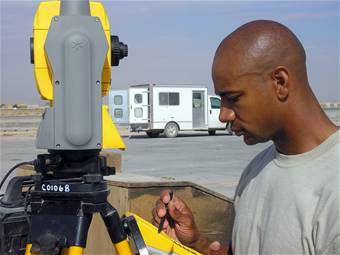 Air Force civil engineers have been working hard at Kandahar AB, Afghanistan, to keep air operations at the base going at a steady clip. Just in the past three months, they have repaired holes in the runway (a recent 200-foot crater was patched up in less than an hour), sealed cracks on the airfield to reduce water seepage, helped maintain 100 percent night flying operations, and completed emergency fixes on nearly 58,000 square feet of runway. “They always find a way to make the mission happen despite having less people, equipment, and supplies than would be expected,” said Capt. Jason Reibel, flight commander of the 451st Expeditionary Group Civil Engineer Flight. The engineers have taken a once substandard airfield that failed an assessment two years ago and turned it into a 100-percent operation that runs around the clock, said USAF officials.
Air Force civil engineers have been working hard at Kandahar AB, Afghanistan, to keep air operations at the base going at a steady clip. Just in the past three months, they have repaired holes in the runway (a recent 200-foot crater was patched up in less than an hour), sealed cracks on the airfield to reduce water seepage, helped maintain 100 percent night flying operations, and completed emergency fixes on nearly 58,000 square feet of runway. “They always find a way to make the mission happen despite having less people, equipment, and supplies than would be expected,” said Capt. Jason Reibel, flight commander of the 451st Expeditionary Group Civil Engineer Flight. The engineers have taken a once substandard airfield that failed an assessment two years ago and turned it into a 100-percent operation that runs around the clock, said USAF officials.
The Space Force’s Combat Forces Command is expanding its footprint with the creation of two new operations hubs for electronic warfare and satellite communications.

